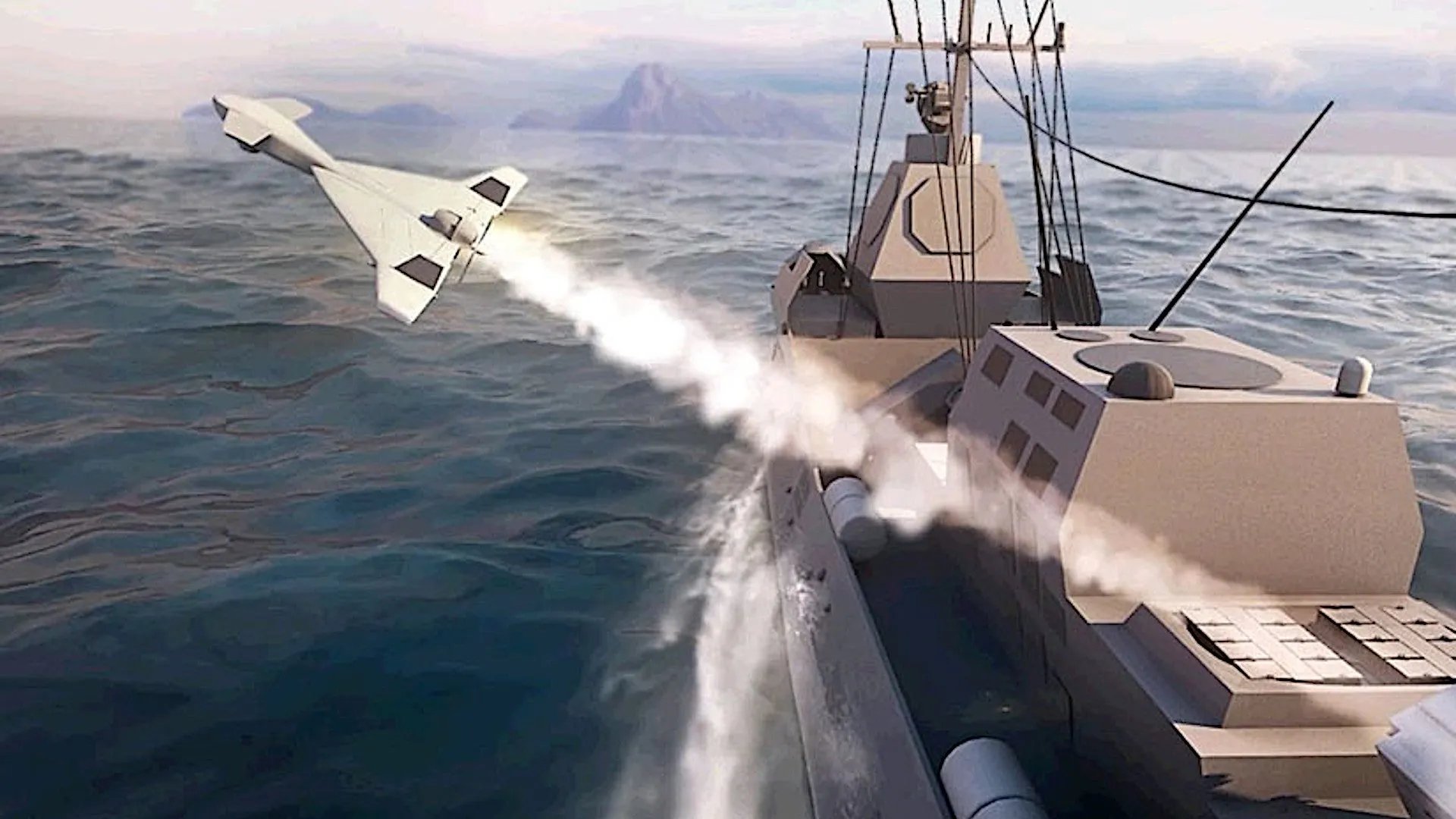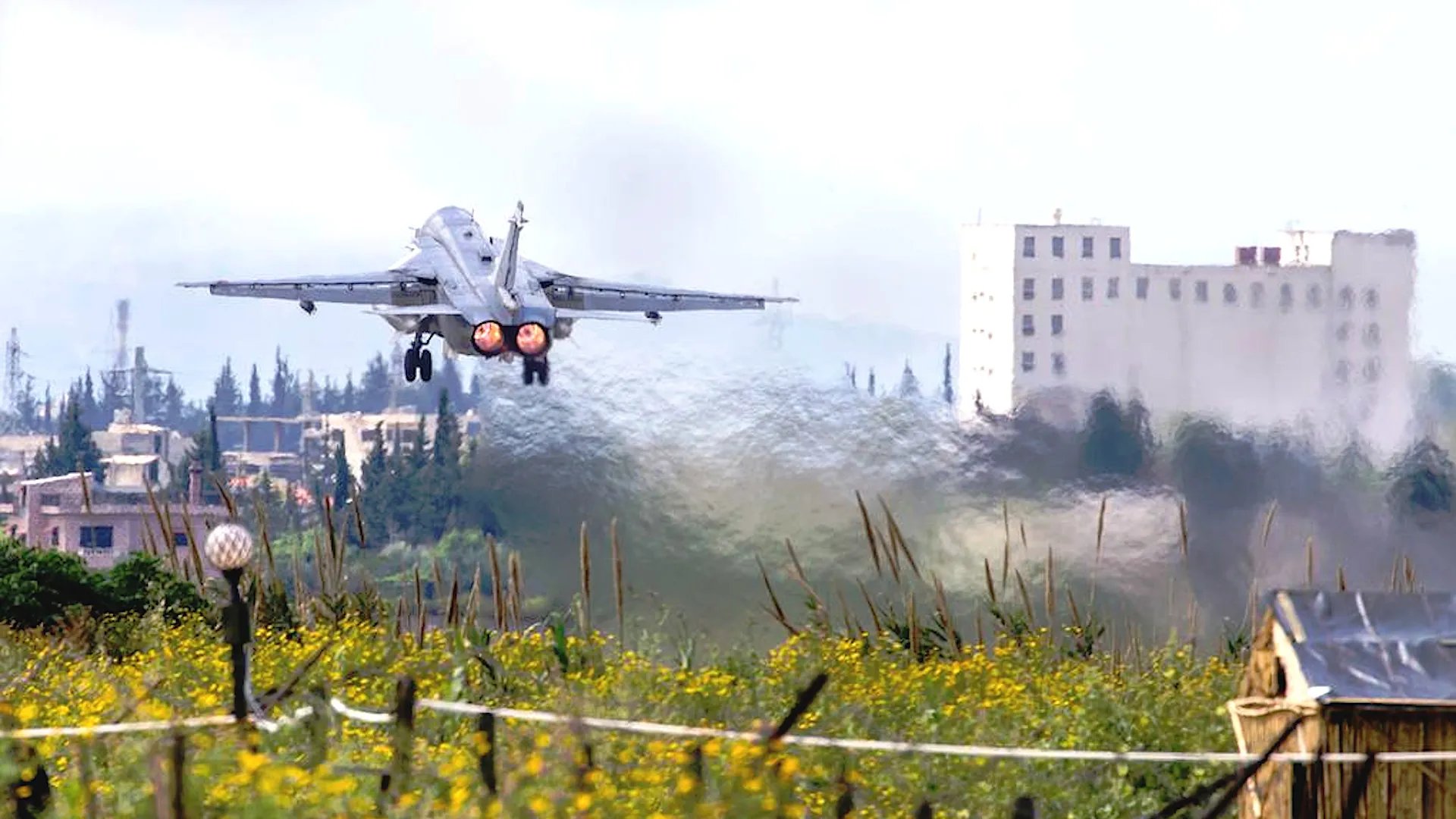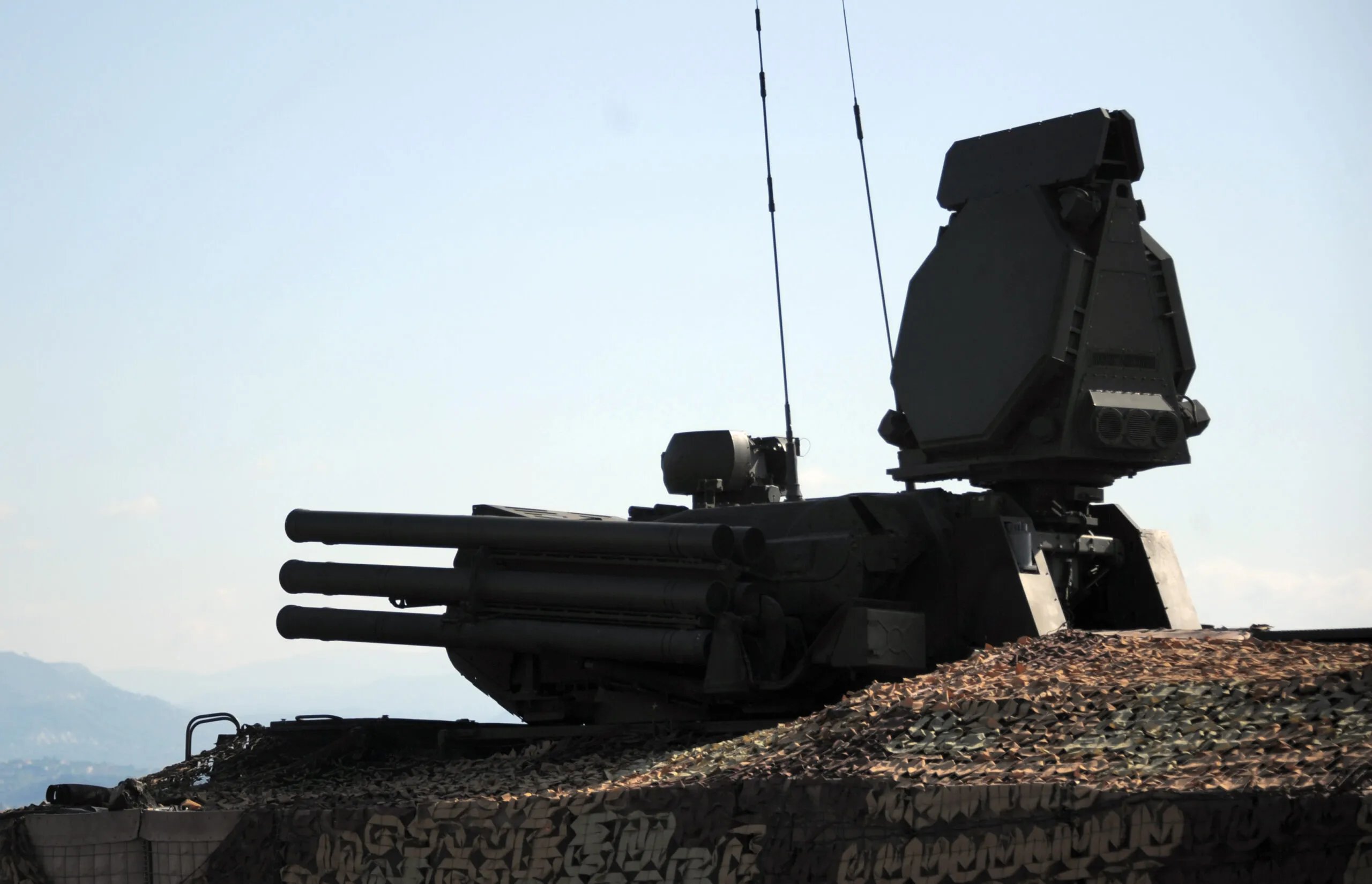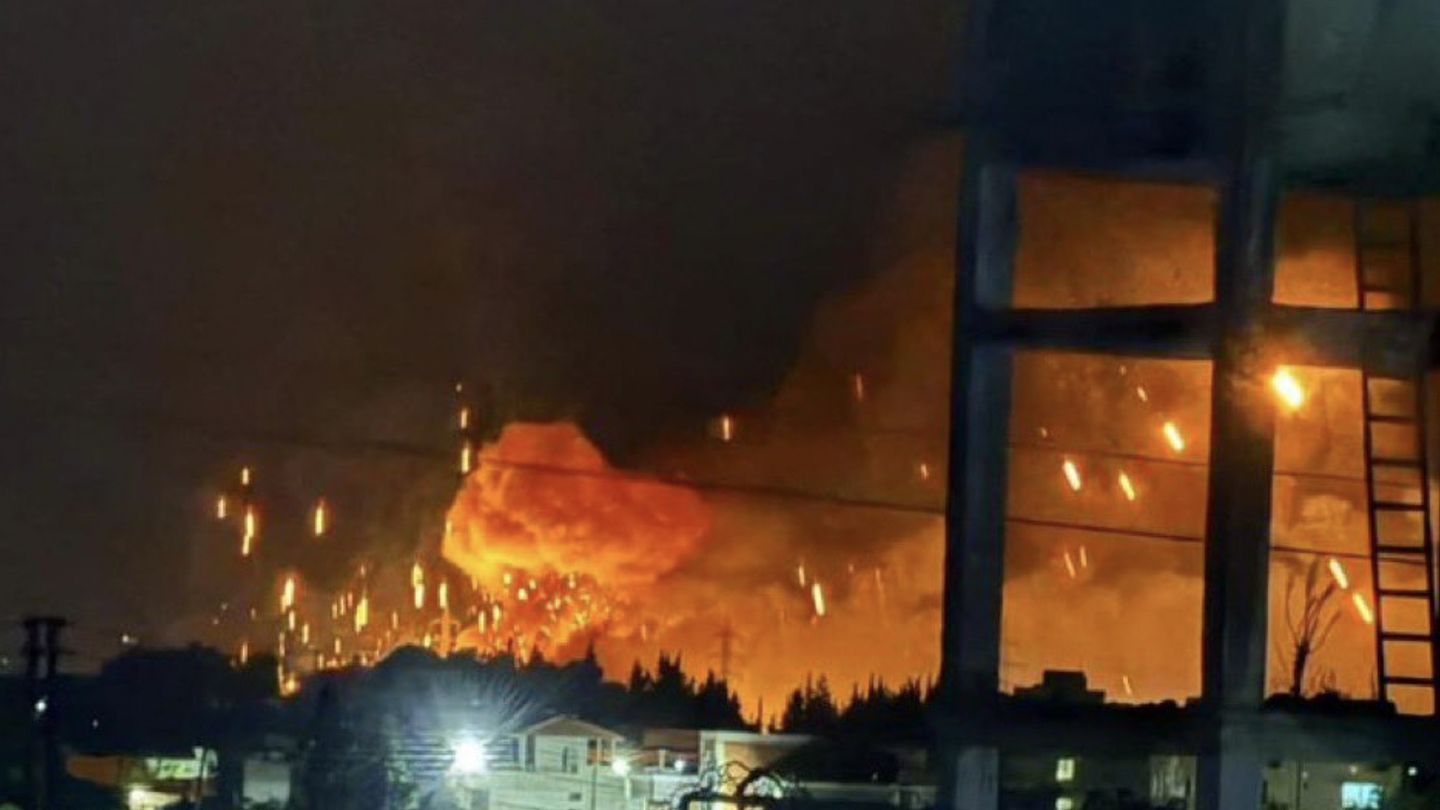Israeli conducted strikes near the Syrian coast this morning, with explosions reported in the vicinity of the Russian-operated Khmeimim Air Base, near the city of Latakia. At this stage, it’s not clear if the Russian airfield was actually hit, deliberately or otherwise — which would be a first. Either way, however, the attacks represent a notable escalation in terms of Israel’s willingness to prosecute targets that are very close to this key Russian military facility in Syria and a major point of pride for Moscow.
Initial accounts from the Syrian Observatory for Human Rights (SOHR), a U.K.-based information office, describe attacks in the coastal Latakia province, with targets including an ammunition warehouse said to be near Jablah city, not far from Khmeimim Air Base. Weapons supplied by Iran and destined for Hezbollah, its Lebanese ally and proxy, often are delivered first to Syria, for onward transit to Lebanon. The suggestion here is that Iranian munitions headed for the militant group were targeted soon after they arrived in Syria.
According to Israel Defense Forces (IDF) spokesperson Avichay Adraee, Hezbollah has been recently smuggling weapons into Lebanon from Syria via the Masnaa border crossing.
Only yesterday, the IDF released a video showing examples of Russian-made weapons it says its troops captured in Lebanon, including Metis-M anti-tank guided missiles, Strela-2 man-portable air defense systems, MRO-A rocket-propelled anti-personnel flamethrowers, and RPG-29 Vampire and RPG-27 Tavolga rocket-propelled grenades.

The SOHR says that the warehouse in Jablah was destroyed and also reports the “presence of warships in the sea, and warplanes believed to be Israeli.” The group says that Syrian and Russian air defenses were active for more than 40 minutes in an effort to thwart the attacks.
The mention of Israeli Navy warships in the SOHR account is unusual, but it cannot be confirmed that these were the source of the attacks. Normally, Israel has used its fighter aircraft to conduct missions of this kind, although Israeli Navy warships have had a presence off Syrian shores.
The Israeli Navy is not notably heavily-equipped for striking targets on land, although it’s possible that the latest Gabriel 5 anti-ship missile can also be used for land attack. An export version of this weapon, the Sea Breaker, is advertised as having a precision land attack capability, thanks to its imaging infrared seeker. Gabriel 5 missiles are used by the latest Sa’ar 6 class corvettes and may be fitted to older Sa’ar 5 class corvettes, as well. They are thought to have a range of up to 248 miles. Israel’s submarine fleet is also capable of launching the secretive Popeye Turbo long-range cruise missiles, but those are thought to be only configured for nuclear strikes as they make up the country’s second-strike deterrent.
Another possibility, and one that would tally with reports of drones being in the air at the time of the attacks, is that Israel launched one-way attack drones or loitering munitions from warships or other vessels off the coast. As TWZ has discussed before, Israel has developed a ship-based version of its popular Harop drone. Standard versions could also be launched from containers on a ship’s deck.

Reports on Syrian state television said that Israel was responsible for bombing Khmeimim Air Base “an hour after the arrival of an Iranian plane belonging to Qeshm Airlines.” The same source claims that the Israelis’ targets were “military sites in Latakia province” as well as a warehouse within the perimeter of the air base. “The Israeli strike did not target the runways or towers at Khmeimim Air Base and Latakia’s civilian airport,” Syrian state television says.
The Syrian account describes Israeli bombardment launched from the sea, involving 30 missiles that were launched between 3:55 a.m. and 4:41 a.m. After the strikes ended, Russian aircraft were on patrol over Latakia.
As for Khmeimim Air Base, this has been a major hub for the Kremlin’s military intervention in Syria, which was launched in 2015. Two years later, the Russian government signed a new long-term lease for the base with Syrian authorities, as part of a larger deal that also saw Russia extend its access to port facilities at Tartus, further to the south, for at least another 49 years. This arrangement came after Russian forces, especially combat airpower, had been instrumental in preventing the collapse of the regime of Syrian dictator Bashar Al Assad. Now, the facility serves as the only Russian airfield on the Mediterranean, a highly strategic but also symbolic prize that Moscow gained in exchange for saving Assad.

An unconfirmed report describes the death of a “prominent commander” in the Iranian Islamic Revolutionary Guard Corps (IRGC), following Israeli strikes on Khmeimim Air Base.
Also today, Syria’s state-controlled news agency Sana reported that Syrian air defenses were again active, this time confronting “hostile targets” in the skies near Damascus but provided no further details.
The SOHR reports that an Israeli airstrike on the Syrian capital resulted in the death of Hassan Jaafar, the son-in-law of Hezbollah leader Hassan Nasrallah. He was said to be one of three killed — with another three injured — when a building was flattened in the Mezzah district in the west of the city.
Israel has long been carrying out strikes against Iran-linked targets in Syria but has increased the intensity of such raids since last year’s October 7 attack by the Palestinian militant group Hamas on Israeli territory.
These latest strikes are being carried out in addition to attacks on targets in Gaza, Lebanon, and Yemen.
In the course of this year so far, the SOHR has documented 94 Israeli attacks on Syrian territory, comprising 77 airstrikes and 17 rocket/missile attacks by ground forces. In the process, the group says that Israel destroyed nearly 185 targets, including buildings, weapons and ammunition warehouses, headquarters, vehicles, and others. SOHR claims that the strikes killed 250 combatants and injured 177 others. Of those casualties, significant numbers are said to have been from the IRGC and Hezbollah.
The majority of these attacks have targeted objectives in and around Damascus.
The latest round of Israeli attacks is different, though, in that Israel has apparently targeted Iran-linked objectives — specifically, weapons destined for Hezbollah —in very close proximity to the most important Russian military hub in Syria. Perhaps, Israel has even deliberately targeted a facility at the air base itself, although that remains unclear.
In either scenario, the incident is concerning for Russia and Syria in terms of air defenses. Khmeimim is the major hub for Russian air defense systems in the country, although repeated attacks by drones have raised previous questions about just how resilient this defensive umbrella is. Its current status is murky. On one hand tactics should have improved after years or war in Ukraine. On the other hand, Russia has shifted many air defense assets to that conflict. So, exactly what level of protection remains at the installation, at least as of yesterday, isn’t clear.

Israel has previously hit targets very close to the Russian naval base at Tartus, prompting an angered reaction from the Kremlin. Again, weapons headed to Hezbollah appear to have been the targets. Israel historically also gave Russia advance warning about its attacks on targets in Syria, although this may well no longer be the case.
For its part, Israel almost never comments on attacks of this kind within Syria, and satellite imagery of the base is so far inconclusive. The available low-resolution imagery from this morning shows everywhere but some of the main apron and core of the base’s operations and administration area but with no obvious damage or smoke.
If this attack was indeed within the perimeter of the air base, it would appear that Israel has now decided that the risk is one worth taking if it’s to succeed in intercepting weapons before they get into the hands of Hezbollah in Lebanon. It would also indicate that this installation, while still technically belonging to the Assad regime, is being used for weapons transfers which Russia would likely be privy to. This would be a major change in what is publicly known about how this Russian-leased installation is used.
Contact the author: thomas@thewarzone.com
